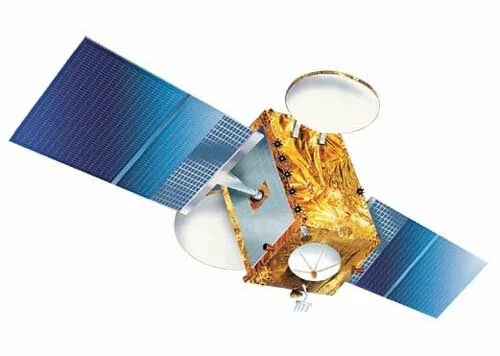The concept of beaming educational programmes via satellites was demonstrated in India in 1975-76 through the Satellite Instructional Television Experiment(SITE) conducted using the American Application Technology Satellite (ATS-6). Indian National Satellite system (INSAT) launch in 1983, enabled telecasting of a variety of educational programmes in the country. During the 1990s, the Jhabua Developmental Communications Project and Training and Developmental Communication Channel was launched.
With success of satellite based education delivery, country’s premier space institution ISRO concieved Education Satellite (EduSAT) in October 2002. The 1,950 kilogram EDUSAT was launched by GSLV.

Edusat India
EDUSAT is configured for audio-visual medium, employing digital interactive classroom and multimedia and multi-centric system. The satellite has multiple regional beams covering different parts of India — five Ku-band transponders with spot beams covering northern, north-eastern, eastern, southern and western regions of the country. It has another Ku-band transponder with its footprint covering the Indian mainland region. Besides the Ku-band transponders, the satellite carries six C-band transponders with their footprints covering the entire country.
EDUSAT has provided connectivity to schools, colleges and higher levels of education and also to support non-formal education including developmental communication. ISRO provides the space segment for EDUSAT System and has demonstrated the efficacy of the satellite system for interactive distance education. Content generation is the responsibility of the user agencies.
The two types of terminals – Satellite Interactive Terminals (SITs) and Receive Only Terminals (ROTs) have been deployed under EDUSAT programme. The ROTs are used for providing primary and secondary education and the SITs are used for providing higher and professional education. The live classes conducted the expert teachers are transmitted from the studios to these schools and colleges. Using SITs the students can have live interaction with the expert teacher. Most of these terminals are deployed in rural areas.
University Grants Commission (UGC), through its body Consortium for Educational Communication (CEC) is using EDUSAT facility for curriculum based education. UGC-CEC uses EDUSAT network for live transmission of their classroom programme.
All India Council for Technical Education (AICTE) has sponsored telecasting of programmes through AICTE-EDUSAT network mostly for curriculum based teaching as also for conducting training programmes and seminars. The Council is also engaged in the development of digital course wares.
Indira Gandhi National Open University (IGNOU) uses the satellite for curriculum based education, teachers’ training, professional educational courses and for conducting teleconferencing sessions for software content generation.
NCERT conducts inter-active orientation/training programmes of teachers and teachers’ educators.
Department of Science & Technology (DST) is uses EDUSAT network for group discussion, lectures, demonstrations, video-shows, training and capacity building programmes.
Speak Your Mind